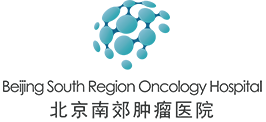On August 13, 2025, Pacific Time, the official website of the 2025 World Conference on Lung Cancer (WCLC) released the selected research abstracts for this year’s conference, Among the highlights is the updated abstract for the first-in-human Phase 1 clinical trial of HLX43, Henlius’ PD-L1 ADC.
At present, there are still many clinical trials of new anti-cancer technologies in China seeking patients. Consultation on new drugs and technologies, you can contact Beijing South Region Oncology Hospital International Department.
Phone Number:4008803716
WeChat ID: 17801183037
Email:myimmnet@163.com
HLX43 is a broad-spectrum anti-tumor ADC candidate targeting PD-L1, which exhibits dual mechanisms integrating immune checkpoint blockade and payload-mediated cytotoxicity. Preclinical data have shown that, HLX43 has good anti-tumour effects and a favorable tolerability profile in non-small cell lung cancer (NSCLC), cervical cancer (CC), esophageal squamous cell carcinoma (ESCC), and other tumour types that were PD-1/L1 mAb-resistant.
According to the updated abstract, HLX43 continues to demonstrate a high response rate in patients with advanced solid tumors, particularly in pretreated NSCLC patients who failed checkpoint inhibitor therapy. HLX43 exhibits superior efficacy in specific subgroups, with an objective response rate (ORR) of 47.4% in EGFR wild-type non-squamous NSCLC, while maintaining a favorable safety profile. Notably, HLX43 demonstrates robust efficacy regardless of PD-L1 expression, indicating its biomarker-independent antitumor potential.
Effective in Later-Line Treatment of CPI-Resistant NSCLC:As of February 28, 2025, a total of 85 patients received HLX43. In Phase Ia (dose-escalation), 21 patients with advanced solid tumors were enrolled, while in Phase Ib (dose-expansion), 64 NSCLC patients were recruited across three cohorts (2, 2.5, and 3 mg/kg). Notably, 88.2% (75/85) of patients failed prior checkpoint inhibitor (CPI) therapy.
Promising Efficacy in NSCLC with Notable Results in Specific Subgroups: Among the 76 NSCLC patients (69 efficacy-evaluable), ORR was 31.9% (22/69), with a disease control rate (DCR) of 87.0% (60/69). Subgroup analyses demonstrated promising efficacy of HLX43 in specific populations: the 2 mg/kg and 2.5 mg/kg cohorts in Phase Ib achieved ORRs of 38.1% (8/21) and 33.3% (7/21), respectively; CPI-refractory NSCLC patients (n=61) showed an ORR of 32.8% (20/61); EGFR wild-type non-squamous NSCLC patients (n=19) had an ORR of 47.4% (9/19).
Favorable Safety Profile, High Efficacy with Low Toxicity: In Phase Ia, one DLT event involving febrile neutropenia was observed in the 4 mg/kg group. Treatment-related adverse events (TRAEs) were reported in 95.2% of patients, mostly Grade 1-2. Grade ≥3 TRAEs occurred in 5 patients (23.8%), all from the 3 and 4 mg/kg cohorts, most frequently decreased neutrophil count (19%), decreased white blood cell count (19.0%) and anemia (14.3%). Immune-related adverse events (irAEs) reported in this study suggests HLX43 is capable of eliciting immunotherapeutic effects. Notably, patients who reported irAEs demonstrated a higher objective response rate (ORR).
Effective in different biomarker status: PD-L1-positive NSCLC patients (n=50) exhibited an ORR of 32.0% (16/50) while PD-L1-negative/unknown patients (n=19) achieved an ORR of 31.6% (6/19), with no significant difference observed.
At present, there are still many clinical trials of new anti-cancer technologies in China seeking patients. Consultation on new drugs and technologies, you can contact Beijing South Region Oncology Hospital International Department.
Phone Number:4008803716
WeChat ID: 17801183037
Email:myimmnet@163.com
Post time: Aug-15-2025

